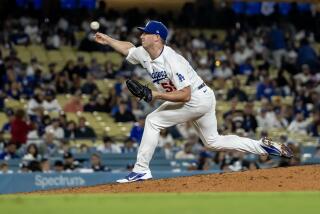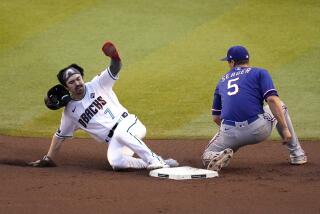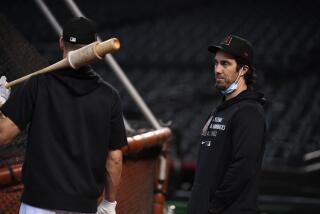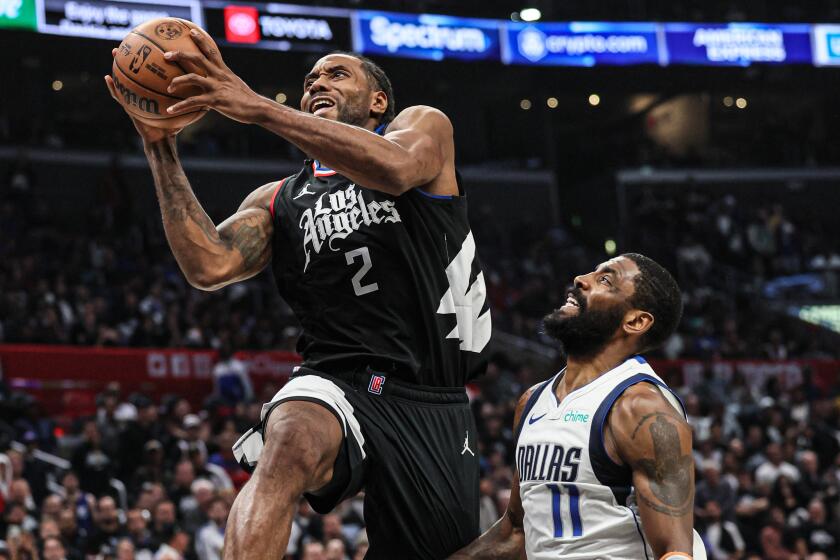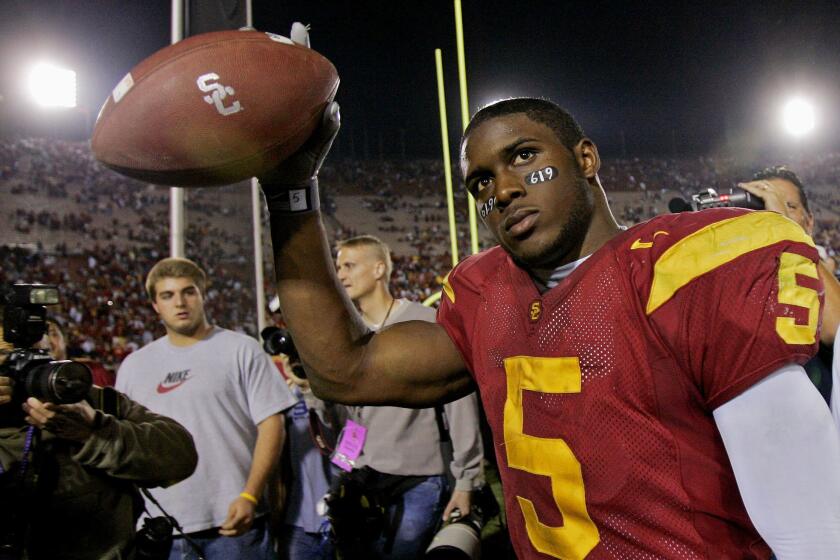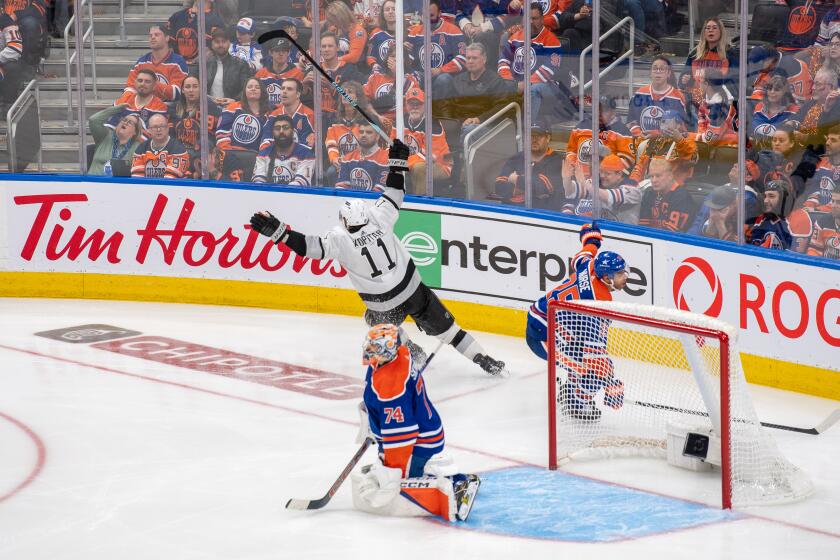Angels’ Jered Weaver, Garrett Richards are thinking finesse, not speed
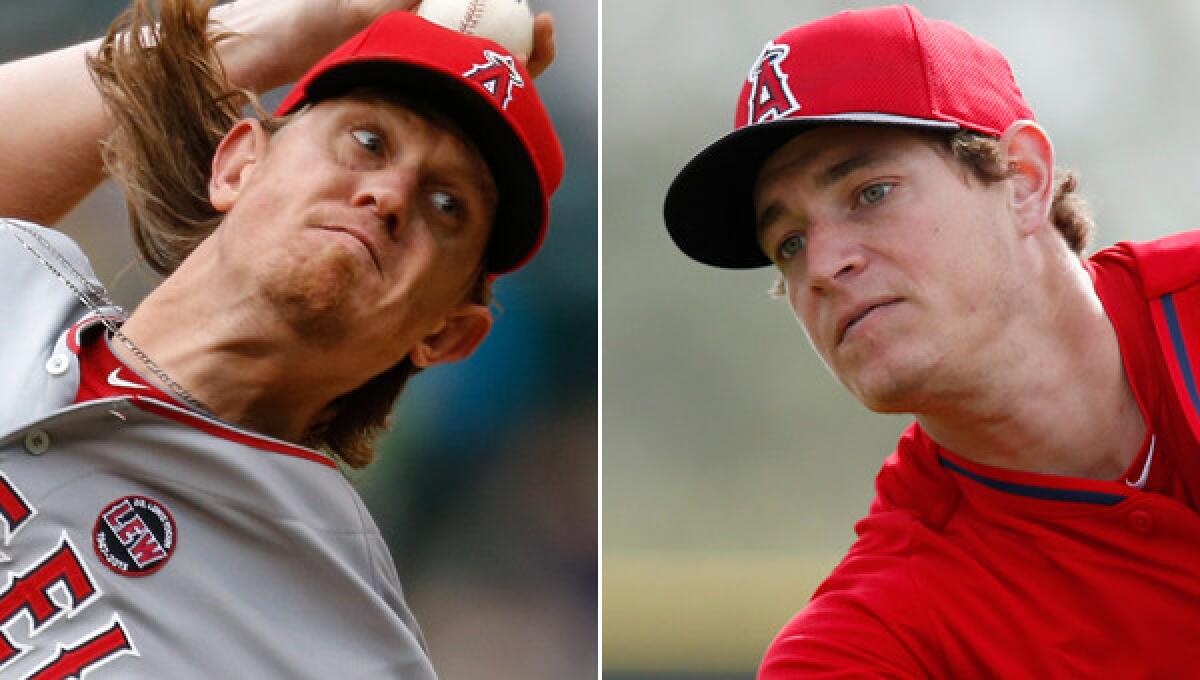
TEMPE, Ariz. — Jered Weaver was just like Garrett Richards a few years back, a young buck with the mound bravado that often accompanies a 95-mph fastball.
“I had that at one point,” said Weaver, the 31-year-old right-hander who has been the Angels ace for four seasons. “I used to throw hard, and when I first came up, I tried to miss bats and strike everyone out. But that stuff doesn’t last forever.”
This isn’t a case of fastball envy. Weaver’s heater is now barely lukewarm. His average fastball velocity has dropped from 90.2 mph as a rookie in 2006 to 86.5 mph in 2013, according to Fangraphs.com. But he’s not pining for the stuff of Richards, the 25-year-old right-hander with a mid-90s fastball.
Weaver has become the ultimate pitcher, mixing a sinking two-seam fastball, slider, curve and changeup to keep hitters off-balance and compile a 113-60 record and 3.24 earned-run average in eight big league seasons.
“If I can put the ball where I want to, it doesn’t really matter how hard I throw,” said Weaver, who is scheduled to make his second exhibition start Wednesday against the San Francisco Giants in Scottsdale, Ariz.
“I realize it’s not going to be 94 mph, but I’ve never been a big believer in all that stuff. I’ve done a pretty good job of pitching with what I’ve had the last four or five years.”
Weaver, a first-round pick out of Long Beach State in 2004, threw 94 mph in college, but persistent tightness in his shoulder has taken its toll in recent years.
Weaver has been working with a massage therapist year-round to “grind out” the scar tissue in his shoulder. He said he’s feeling as good this spring as he ever has, but that doesn’t mean his velocity will reappear.
“It’s no secret I’ve been dealing with some shoulder stuff for the last four years,” Weaver said. “I’ve been throwing through some things I probably shouldn’t have thrown through, but that’s my mentality. I want to pitch every fifth day.
“I finally figured out what was wrong and fixed it. I don’t think it will add more velocity, but hopefully it will make what I have more consistent.”
Weaver has all but abandoned his four-seam fastball, which he used to try to “blow by guys” early in his career. His strikeouts-per-nine-innings ratio dropped from a high of 9.3 in 2010 to 6.8 the last two seasons.
But Weaver has averaged only 2.15 walks per nine innings in the last four years, and he annually ranks among American League leaders in WHIP (walks plus hits per innings pitched). He also has held hitters to a .234 average over his career.
“I try to miss barrels now, make my stuff move, keep guys off-balance,” Weaver said. “If I can get through a game with two strikeouts in eight innings, I’m cool with that.
“The media, fans, I think everyone is a little obsessed with fastball velocity. You have to figure out how to get by with a fastball that isn’t as hard as it used to be.”
That is not yet a problem for Richards, who earned a rotation spot with a strong two-month finish in 2013. Richards has plenty of fastball, but he wants to pitch more like Weaver, mixing in more curves, changeups and sliders.
“The last couple of years I’ve tried to get away from thinking about throwing hard,” Richards said. “I’m trying not to be a maximum-effort guy. I want to control counts, throw the ball down in the zone and get ahead of guys.”
After shuttling between the bullpen and rotation for 11/2 years, Richards found a new level of confidence and comfort when Manager Mike Scioscia inserted him into the rotation full-time in July.
Richards, who had a 5-4 record with a 3.72 ERA in his last 13 starts, began using his brains instead of his brawn to pitch his way out of jams.
“The game slowed down for me,” Richards said. “When a situation arose, I could work my way through it. I didn’t panic.”
Weaver has set a good example for younger pitchers like Richards, but he’s not sure they should follow too closely in his footsteps.
“I wouldn’t try to pitch like me, that’s for sure,” Weaver said. “Garrett has great stuff. It’s a matter of working with what he’s got, mixing in a little feel here and there, throwing a breaking ball in a fastball count.”
Twitter: @MikeDiGiovanna
More to Read
Get our high school sports newsletter
Prep Rally is devoted to the SoCal high school sports experience, bringing you scores, stories and a behind-the-scenes look at what makes prep sports so popular.
You may occasionally receive promotional content from the Los Angeles Times.
